 W
WFrançois de Bassompierre was a French courtier.
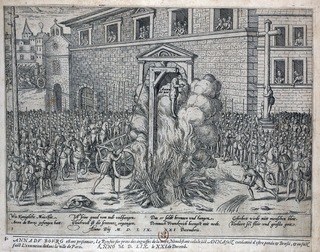 W
WAnne du Bourg was a French magistrate, nephew of the chancellor Antoine du Bourg, and a protestant martyr.
 W
WMarie-Madeleine d'Aubray, Marquise de Brinvilliers was a French aristocrat who was accused and convicted of murdering her father and two of her brothers in order to inherit their estates. After her death, there was speculation that she poisoned upwards of 30 sick people in hospitals to test out her poisons, but these rumors were never confirmed. Her alleged crimes were discovered after the death of her lover and co-conspirator, Captain Godin de Sainte-Croix who saved letters detailing dealings of poisonings between the two. After being arrested, she was tortured, forced to confess, and finally executed. Her trial and death spawned the onset of the Affair of the Poisons, a major scandal during the reign of Louis XIV accusing aristocrats of practicing witchcraft and poisoning people. Components of her life have been adapted into various different mediums including: short stories, poems, and songs to name a few.
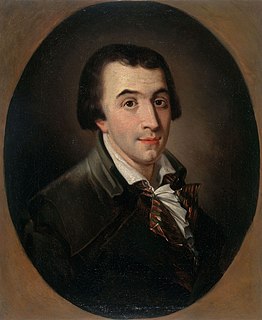 W
WJacques Pierre Brissot, who assumed the name of de Warville, was a leading member of the Girondins during the French Revolution and founder of the abolitionist Society of the Friends of the Blacks. Some sources give his name as Jean Pierre Brissot.
 W
WRoger de Rabutin, comte de Bussy, commonly known as Bussy-Rabutin, was a French memoirist. He was the cousin and frequent correspondent of Madame de Sévigné.
 W
WCount Alessandro di Cagliostro was the alias of the occultist Giuseppe Balsamo.
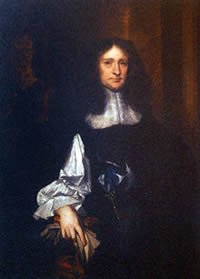 W
WVice Admiral Sir George Carteret, 1st Baronet was a royalist statesman in Jersey and England, who served in the Clarendon Ministry as Treasurer of the Navy. He was also one of the original lords proprietor of the former British colony of Carolina and New Jersey. Carteret, New Jersey, as well as Carteret County, North Carolina, both in the United States, are named after him. He acquired the manor of Haynes, Bedfordshire, in about 1667.
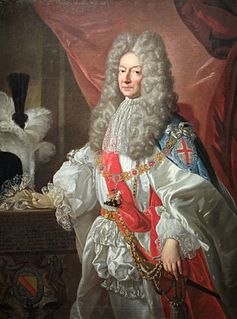 W
WAntoine Nompar de Caumont, duc de Lauzun was a French courtier and soldier. He was the only love interest of the "greatest heiress in Europe", Anne Marie Louise d'Orléans, Duchess of Montpensier, cousin of Louis XIV.
 W
WHenri II de Bourbon, Prince of Condé was the head of the senior-most cadet branch of the House of Bourbon for nearly all his life and heir presumptive to the king of France for the first few years of his life. Henri was the father of Louis, le Grand Condé, the celebrated French general.
 W
WJean-Baptiste d'Ornano, Marquis de Montlaur (1581–1626) was a French nobleman and Marshal of France (1626).
 W
WLeonora Dori Galigaï was a French courtier of Italian origin, an influential favourite of the French regent Marie de' Medici, mother of King Louis XIII of France. Galigaï was married to Concino Concini, the later marquis and then marshal d'Ancre, during Marie's reign as Queen Mother and Regent of France.
 W
WCharles-François du Périer Dumouriez was a French general during the French Revolutionary Wars. He shared the victory at Valmy with General François Christophe Kellermann, but later deserted the Revolutionary Army, and became a royalist intriguer during the reign of Napoleon as well as an adviser to the British government. Dumouriez is one of the names inscribed under the Arc de Triomphe, on Column 3.
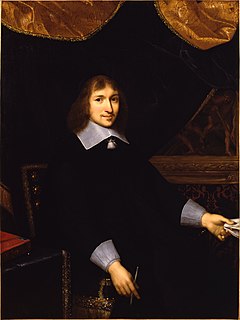 W
WNicolas Fouquet, marquis de Belle-Île, vicomte de Melun et Vaux was the Superintendent of Finances in France from 1653 until 1661 under King Louis XIV. He had a glittering career, and acquired enormous wealth. He fell out of favor, accused of peculation and lèse-majesté. The king had him imprisoned from 1661 until his death in 1680.
 W
WNicolas Fréret was a French scholar.
 W
WÉlie Catherine Fréron was a French literary critic and controversialist whose career focused on countering the influence of the philosophes of the French Enlightenment, partly thorough his vehicle, the Année littéraire. Thus Fréron, in recruiting young writers to counter the literary establishment became central to the movement now called the Counter-Enlightenment.
 W
WCharles de Gontaut, duc de Biron was a French soldier whose military achievements were accompanied by plotting to dismember France and setting himself up as ruler of an independent Burgundy.
 W
WHenri du Plessis-Guénégaud, Lord of the Plessis-Belleville, Marquis de La Garnache was a French scholar and a Secretary of State during the reigns of Louis XIII and Louis XIV.
 W
WLouis de Lorraine known as the Cardinal de Guise was the third son of Henry I, Duke of Guise and Catherine of Cleves.
 W
WLaurent Angliviel de la Beaumelle was a French Protestant writer.
 W
WFrançois VI, Duc de La Rochefoucauld, Prince de Marcillac was a noted French moralist and author of maxims and memoirs. He is part of the literary movement of classicism and best known for his maxims. Although he only officially published his Memoirs and his Maxims, his literary production is dense. His maxims focus on the merciless nature of human conduct, with a cynical attitude towards virtuosity and avowals of affection, friendship, love, and loyalty. Leonard Tancock regards his Maxims as "one of the most deeply felt, most intensely lived texts in French literature", with his "experience, his likes and dislikes, sufferings and petty spites ... crystallized into absolute truths."
 W
WCharles Armand Tuffin, Marquis de la Rouërie, also known in the United States as "Colonel Armand," was a Breton cavalry officer who served under the American flag in the American War of Independence. He was promoted to brigadier general after the Battle of Yorktown. He is also known as a founder and early leader of the Breton Association during the French Revolution. La Rouërie is less-remembered than Lafayette and others in writings of French participation in the Revolutionary war.
 W
WJean Henri Latude, often called Danry or Masers de Latude, was a French writer famous for his lengthy confinement in the Bastille, at Vincennes, and for his repeated escapes from those prisons.
 W
WSimon-Nicholas Henri Linguet was a French journalist and advocate known for his conservative politics who was executed during the French Revolution.
 W
WFrançois Henri de Montmorency-Bouteville, Duke of Piney-Luxembourg, commonly known as Luxembourg, and nicknamed "The Upholsterer of Notre-Dame", was a French general and Marshal of France. A comrade and successor of the Great Condé, he was one of the most accomplished military commanders of the early modern period and is particularly noted for his exploits in the Franco-Dutch War and War of the Grand Alliance. Not imposing physically, as he was a slight man and hunchbacked, Luxembourg was nonetheless one of France's greatest generals. He never lost a battle in which he held command.
 W
WLouis de Luxembourg, Count of Saint-Pol, of Brienne, de Ligny, and Conversano belonged to the Ligny branch of the House of Luxemburg and was Constable of France.
 W
WBertrand-François Mahé, comte de La Bourdonnais was a French naval officer and administrator, in the service of the French East India Company.
 W
WLouis Pierre Manuel was a French writer and political figure of the Revolution.
 W
WJean-François Marmontel was a French historian, writer and a member of the Encyclopédistes movement.
 W
WMichel Eyquem de Montaigne, also known as Lord of Montaigne, was one of the most significant philosophers of the French Renaissance, known for popularizing the essay as a literary genre. His work is noted for its merging of casual anecdotes and autobiography with intellectual insight. His massive volume Essais contains some of the most influential essays ever written.
 W
WFrançois de Montmorency, Duc de Montmorency was a French soldier, diplomat and peer who served as governor of Paris. He was Duke of Montmorency, Count of Dammartin, Baron of Châteaubriant and Lord of L'Isle-Adam, Grand Master of France, and Marshal of France.
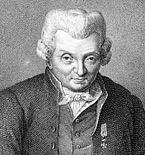 W
WAndré Morellet was a French economist, author of various writings, contributor to the Encyclopédie and one of the last Enlightenment Age philosophes.
 W
WJames Douglas, 14th Earl of Morton, KT, PRS was a Scottish astronomer and representative peer who was President of the Philosophical Society of Edinburgh from its foundation in 1737 until his death. He also became President of the Royal Society, and was a distinguished patron of science, and particularly of astronomy.
 W
WNicolas de L'Hôpital, marquis and later duc de Vitry, seigneur de Nandy et de Coubert, often referred to as Maréchal de Vitry was a French noble, military leader, friend of Louis XIII and Marshal of France (1617).
 W
WBernard Palissy was a French Huguenot potter, hydraulics engineer and craftsman, famous for having struggled for sixteen years to imitate Chinese porcelain. He is best known for his so-called "rusticware", typically highly decorated large oval platters featuring small animals in relief among vegetation, the animals apparently often being moulded from casts taken of dead specimens. It is often difficult to distinguish examples from Palissy's own workshop and those of a number of "followers" who rapidly adopted his style. Imitations and adaptations of his style continued to be made in France until roughly 1800, and then revived considerably in the 19th century.
 W
WGuillaume Postel was a French linguist, astronomer, Cabbalist, diplomat, professor, and religious universalist.
 W
WLouis René Édouard de Rohan known as Cardinal de Rohan, prince de Rohan-Guéméné, was a French bishop of Strasbourg, politician, cardinal of the Roman Catholic Church, and cadet of the Rohan family. His parents were Hercule Mériadec, Prince of Guéméné and Louise Gabrielle Julie de Rohan. He was born in Paris.
 W
WLouis-Isaac Lemaistre de Sacy, a priest of Port-Royal, was a theologian and French humanist. He is best known for his translation of the Bible, the most widespread French Bible in the 18th century, also known as the Bible de Port-Royal.
 W
WDonatien Alphonse François, Marquis de Sade, was a French nobleman, revolutionary politician, philosopher and writer famous for his libertine sexuality. His works include novels, short stories, plays, dialogues, and political tracts. In his lifetime some of these were published under his own name while others, which de Sade denied having written, appeared anonymously. De Sade is best known for his erotic works, which combined philosophical discourse with pornography, depicting sexual fantasies with an emphasis on violence, suffering, anal sex, crime, and blasphemy against Christianity. He was a proponent of absolute freedom, unrestrained by morality, religion, or law. The words sadism and sadist are derived in reference to the works of fiction he wrote which portrayed numerous acts of sexual cruelty. While de Sade mentally explored a wide range of sexual deviations, his known behavior includes "only the beating of a housemaid and an orgy with several prostitutes—behavior significantly departing from the clinical definition of sadism". De Sade was a proponent of free public brothels provided by the state: In order both to prevent crimes in society that are motivated by lust and to reduce the desire to oppress others using one’s own power, de Sade recommended public brothels where people can satisfy their wishes to command and be obeyed.
 W
WMarguerite Jeanne Cordier de Launay, baronne de Staal was a French author.
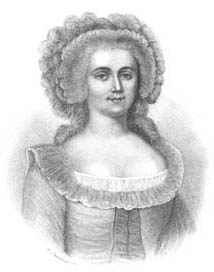 W
WJeanne de Valois-Saint-Rémy, self proclaimed "Comtesse de la Motte" was a notorious French adventuress and thief; she was married to Nicholas de la Motte whose family's claim to nobility was dubious. She herself was an impoverished descendant of the Valois royal family through an illegitimate son of King Henry II. She has been known for her prominent role in the Affair of the Diamond Necklace, one of many scandals that led to the French Revolution and helped to destroy the monarchy of France.
 W
WCharles de Valois was a French royal bastard, count of Auvergne, duke of Angoulême, and memoirist.
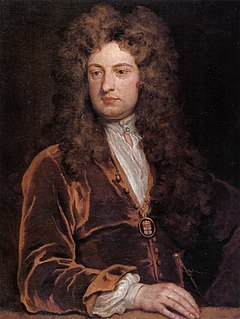 W
WSir John Vanbrugh was an English architect, dramatist and herald, perhaps best known as the designer of Blenheim Palace and Castle Howard. He wrote two argumentative and outspoken Restoration comedies, The Relapse (1696) and The Provoked Wife (1697), which have become enduring stage favourites but originally occasioned much controversy. He was knighted in 1714.
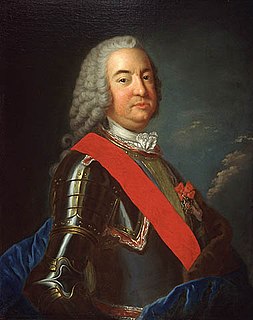 W
WPierre de Rigaud de Vaudreuil de Cavagnial, marquis de Vaudreuil was a Canadian-born colonial governor of French Canada in North America. He was governor of French Louisiana (1743–1753) and in 1755 became the last Governor-General of New France. In 1759 and 1760 the British conquered the colony in the Seven Years' War.
 W
WFrançois-Marie Arouet, known by his nom de plume Voltaire, was a French Enlightenment writer, historian, and philosopher famous for his wit, his criticism of Christianity—especially the Roman Catholic Church—as well as his advocacy of freedom of speech, freedom of religion, and separation of church and state.
 W
WAbraham de Wicquefort was a Dutch diplomat.